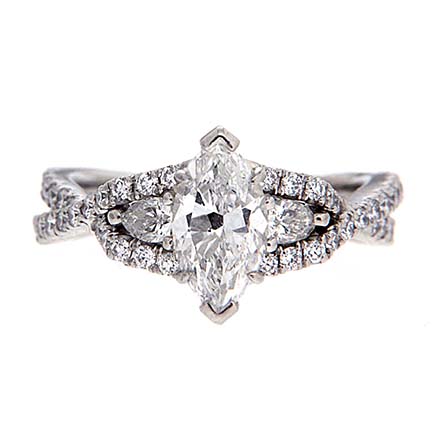Diamonds, of all gems, deserve to be looked closely at, even though it impresses at the first glance. When you are decided that you want to pitch your money on a diamond, a close look is just what you need. So, what exactly are you supposed to want to see in a diamond before you know that it’s worth the money? Well for one, the lesser you see, the superior the gem is. In gems, they call it inclusions or flaws. These are small marks, more like blemishes inside the stone. Though the stones may seem all perfect and spotless from outside, it still may have the marks up close. That is why you need to look through a jeweler’s magnifier.
 Clarity
Clarity
Clarity and color are the two chief quality-determining aspects of a diamond. It is only by looking through a magnifier, can you determine the two in its exactitude. The clearer a diamond is, the higher it goes in the catalogue of prices. What makes a stone clear? The absence of flaws and inclusions. Ideally, a diamond is required to be examined under 3 10 times magnifier to be able to ascertain the inclusions in the piece. The lesser are the flaws, the higher in the table it belongs too. There is only one grade under which perfectly flawless diamonds are enlisted. It is called Fl or flawless. A D Flawless is as best as a diamond gets.
Color
The color is another aspect of the gem that has a role to play in its quality. Ideally, colorless diamonds are the best grades available. Presence of any impure mineral in the crystals is what lends a certain shade to the diamond. So, all naturally colored diamonds have other minerals in trace quantities. Those that are 100% pure are completely colorless, under all magnifying glasses. So, when you are set to buy an achromatic diamond, make sure you pick your pieces from the top grades instead of the bottom ones. From the SI point onward, the stones start to show mild colors, and if you want something pristine, you have to look in the ranges above it.
However, you may want to know this, that diamonds that bear soft colors come for a much cheaper price when compared to ones from the completely colorless variety. So, if you don’t mind a little color in exchange of a good deal of savings, then look under SI clarity.





